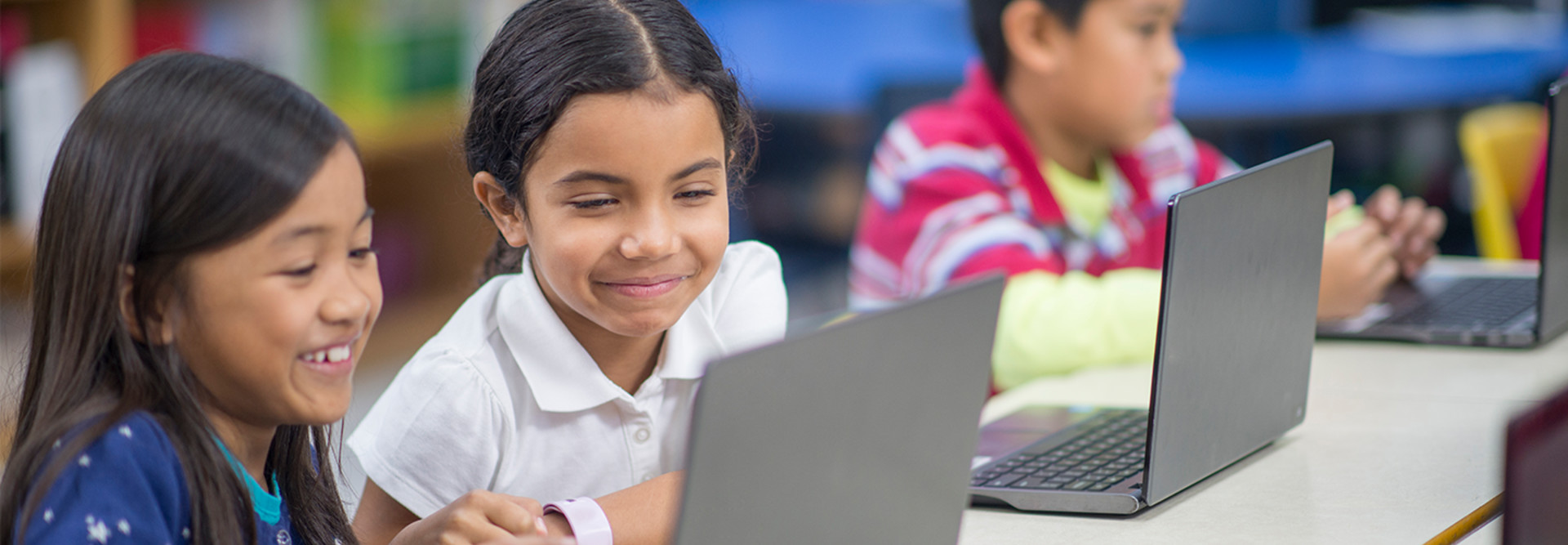How Technology Can Improve Digital Citizenship in K–12
As technology is further integrated into the classroom, digital citizenship is an essential skill all students need to possess.
Responsible technology use is imperative for maintaining a safe learning environment and preparing students to be capable users in a technology-enabled workforce.
Earlier this year in a webinar from edWeb, Jeff Meyer, director of education at Learning.com, outlined the importance of ingraining digital citizenship in students at a young age, and listed some of the educational tools available to teachers for starting these lessons early.
MORE FROM EDTECH: See how digital literacy programs prepare students for a tech-enabled future.
What Is Digital Citizenship?
Digital citizenship and literacy allow one to interact with technology, media and digital resources in real-world situations safely and effectively, according to Meyer.
Students are more exposed to the internet than ever. Young children spend around seven hours every day in front of a screen, and most teenagers have access to a mobile device.
Approaching digital citizenship is a unique issue for K–12 schools. Competent technology use cannot effectively be taught with a rigid course curriculum alone; it needs to be woven into the fabric of the school, according to ISTE CEO Richard Culatta.
“Digital citizenship is not about teaching curriculum — it’s about creating a culture,” Culatta told EdScoop. “That really has to happen at a school level. It can’t just be adding another hour of teaching in a particular class.”
Although this kind of learning takes time, that does not mean schools have to wait idly by until students grasp what it means to be a trustworthy digital citizen. There are tools available to serve as internet guardrails until a culture of digital literacy and responsible use sets in.
Create an Environment of Internet Safety
Knowing how to use the internet safely is crucial to good digital citizenship. Students must understand, as well as they can, how to avoid dangerous websites that may harbor all manner of threats, from misinformation to hidden malware.
As schools create their own, long-term digital citizenship programs, it is important to have some control over what students can access while at school. Until students can be accountable for their own actions, they will need supervision, which requires modern content monitoring software.
One such tool, Relay by Lightspeed Systems, helped Galway Central School District in New York stay alert to unsafe internet browsing on students’ Chromebooks, Nate Millerwurst, a network analyst, told EdTech.
“They’re ¬essentially preventing users from going to sites where they may pick up malware or other things that would jeopardize their district networks,” Millerwurst said. “The good thing is, we can see these warning signs, or these behaviors that are concerning, and talk to their teachers and take steps to do something about it.”
Teach Personal Information Protection
Successful digital citizenship curricula teach students two things: how to protect each other and how to protect themselves.
Nearly 92 percent of children in the United States have an online presence, and nearly 95 percent of teenagers own some kind of personal device, which means students have plenty of opportunity to explore the web without any supervision.
While content monitoring tools are helpful within the walls of the school, to truly teach digital citizenship schools must create a culture that extends beyond the classroom and past graduation.
This means teaching students to be stewards of their own data, as well as training them to identify and avoid pitfalls such as phishing scams. According to the K–12 Cybersecurity Resource Center, over 50 percent of breaches in 2018 were directly caused by “insiders” — either staff or students. This highlights how crucial it is that students be equipped with proper cyberhygiene skills.
Phishing simulations have proved useful in training K–12 faculty and staff. Large and small schools who use these tests have seen the number of users fooled by common phishing techniques drop from 29 and 26 percent, respectively, to 17 and 20 percent.
But students can also benefit from these simulations. Some companies currently offer engaging training modules designed to appeal to younger audiences.
“Anything [schools] can do to help mitigate irregular use on their infrastructure helps them in the long run,” Jonathan King, chief strategy officer at i-SAFE, a nonprofit provider of internet safety education, told Education Week.
Schools are embracing this approach. At Parkway High School in Bossier City, La., for example, students run IT simulations in which they manage the imaginary network of a small company to test their cybersecurity skills. The simulation is part of the U.S. Air Force’s CyberPatriot program, which seeks to encourage K–12 students to explore cybersecurity careers. The program also runs a competition for middle and high school students.
By investing in training modules that can be rolled out regularly on students’ Chromebooks, schools can be sure their students will have the cyber hygiene skills they need to be responsible digital citizens and overseers of their own — and their schools’ — data.










